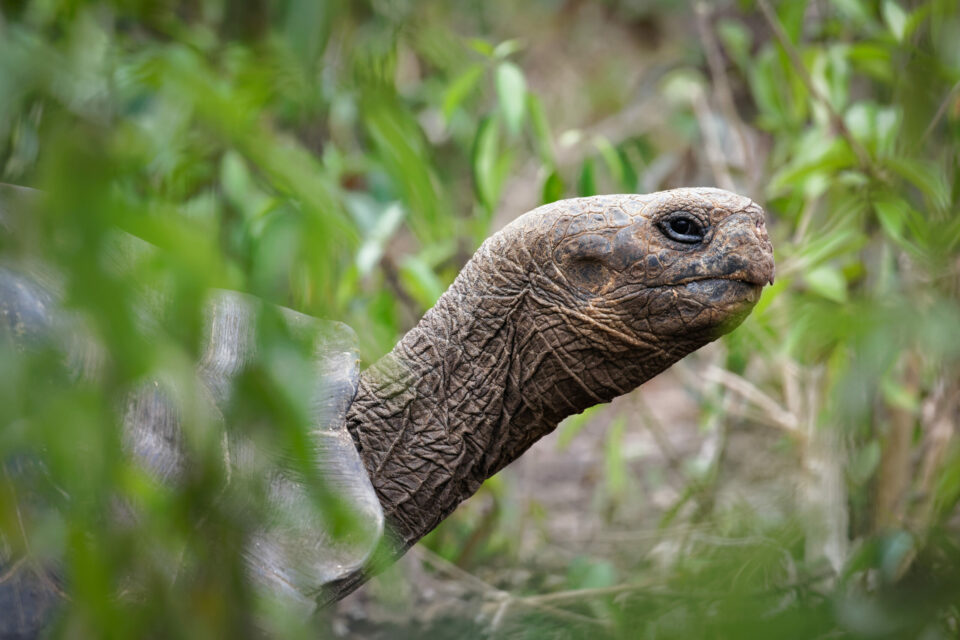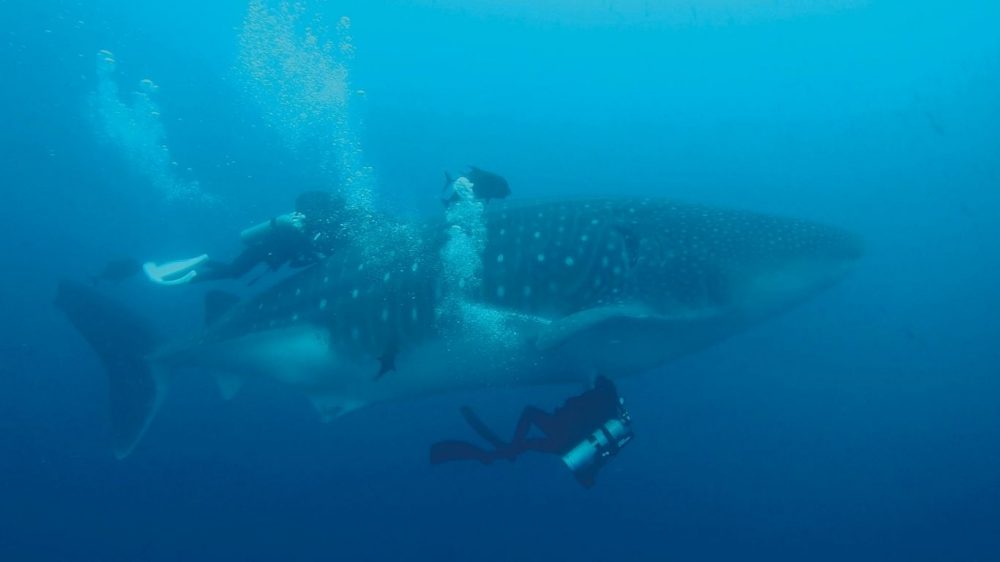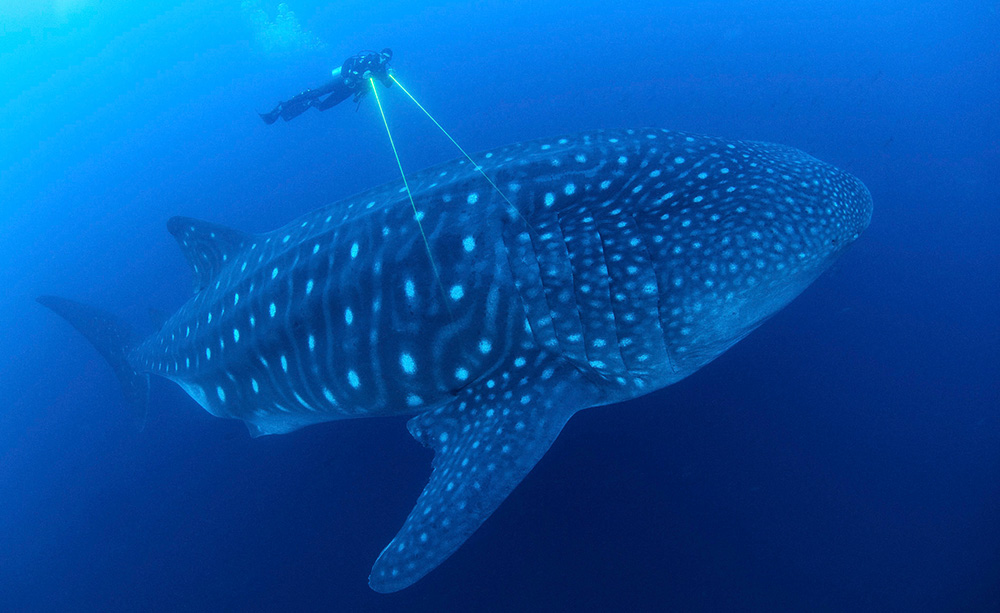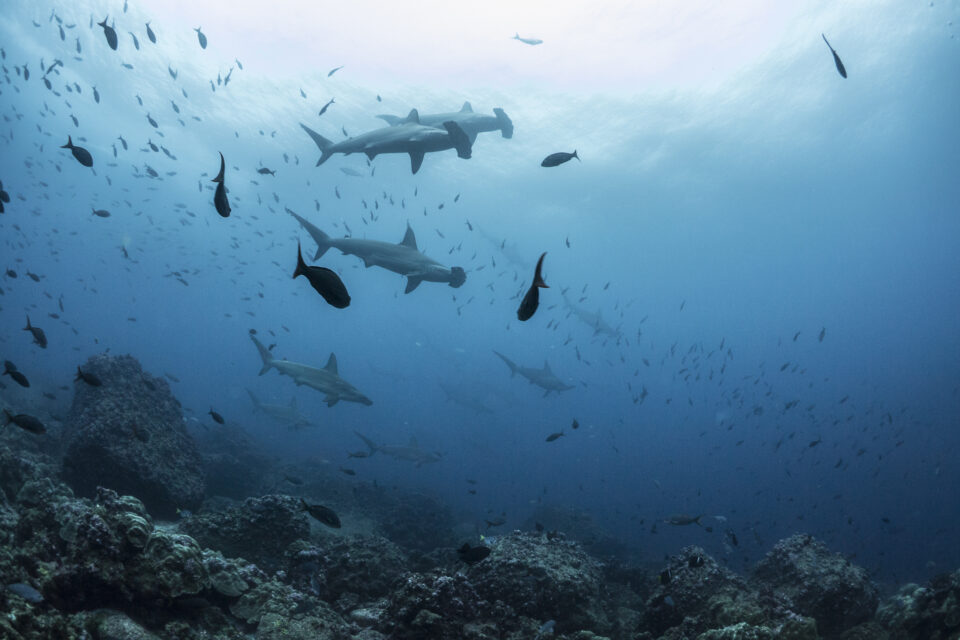

First ever wild whale shark ultrasound in Galapagos: is there a baby on board?
Thanks to recent ground breaking science on the whale shark population in Galapagos, much more light is being shed on the mysterious lives of these elusive, gentle giants that roam the oceans.

Whale shark sampling ©David Acuna
The first ever ultrasounds have now been performed on wild whale sharks in Galapagos. This is an extremely exciting step as the results may offer a glimpse into the mysterious habits and reproductive movements of whale sharks in the Galapagos Islands.
Whale Sharks in Galapagos:
Whale sharks are the largest living fish in the world; the biggest recorded whale shark, from Taiwan, reached a length of 20 metres and weighed up to 42 tons. However, on average a whale shark will approximately be as long as a school bus and weigh around 20 tons – still enormous! Hence why the whale shark acquired the name ‘whale’.

Whale sharks are found in all tropical and warm oceans other than the Mediterranean, and have a lifespan of up to 70 years. Huge groups gather at seasonal feeding aggregations in coastal waters. Several hundreds of whale sharks, each passing through for only a few days, congregate around the Darwin and Wolf islands in the north of Galapagos Marine Reserve. Quite often the costal aggregations of whale sharks are made up of mostly immature males. What is particularly fascinating about the population that visits Galapagos is that the majority of individuals appear to be pregnant females. The whale sharks have large, distended abdomens which usually indicates pregnancy and Galapagos is the only area in the world where whale sharks in this state are recurrently seen. Although, apart from their appearance, up until now this has not been proven otherwise.
Breeding habits:
Even though whale sharks are one of the largest ocean dwellers, no mating or pupping grounds have ever been observed or identified in the wild. It is incredible how little is known about this magnificent species. Only one pregnant female has been analysed from Taiwan in 1996, who was found to have been carrying 304 pups that were all in different phases of development. Therefore, there are still so many unanswered questions surrounding the reproductive ecology of whale sharks. Where do they breed? How long is the gestation period? How frequently do they reproduce?
The Galapagos Whale Shark Project:
The work being done by the Galapagos Whale Shark Project (GWSP), which is a cross-institutional research initiative being partly funded by GCT, is helping to answer these questions. The project has been working since 2011 to advance scientific understanding of whale sharks in the Galapagos Islands to improve their protection within the area. Thus far the team have successfully tracked the migration routes from the Galapagos Islands to the continental shelf off mainland Ecuador and northern Peru through tagging, as well as using technology such as drones to try to decipher more about the ecology of whale sharks.

Wild whale shark ultrasounds:
The GWSP’s most recent and exciting success is that the team were able to take the first ever ultrasounds from three females and blood samples from a mature male and mature female in the wild. This is a global first for an ultrasound being performed on a wild whale shark. The scientists had to work in challenging conditions at depths as low as 37 metres. The results should provide information on the whale sharks’ state of health and physiology. The analysis of these experiments is currently under way and will most importantly confirm whether the females passing through Galapagos are pregnant. This will hopefully reveal more about the importance of the Galapagos Marine Reserve in the life cycle of whale sharks.
Whale shark conservation:
The work being done by GWSP has significant implications for whale shark conservation. Whale sharks have now been listed as Endangered on the IUCN Red List of Threatened Species. This is chiefly due to the high demand for whale shark fins in Asia, (a single whale shark pectoral fin can sell for up to $20,000 USD) and being caught as by-catch by fisheries. A slaughterhouse exposed in south-eastern China was found to have massacred up to 600 whale sharks in one year. This is inevitably leading to a shocking decline in the current population. The more that is learnt about these weird and wonderful creatures, the further this species can be protected and future conservation plans be advanced to become more effective.
What Next?
If you are interested in learning more about the whale shark population in Galapagos, you can read the most recent reports from the Galapagos Whale Shark Project.
There are also several ways in which you can get involved and help support this essential research to stop this species sliding towards extinction. To get involved you can donate, become a member or sign up for our monthly newsletter to be the first to hear about all the project updates.
Related articles


Sharks: Our ocean’s superheroes, not villains

Tagging a new constellation of whale sharks

